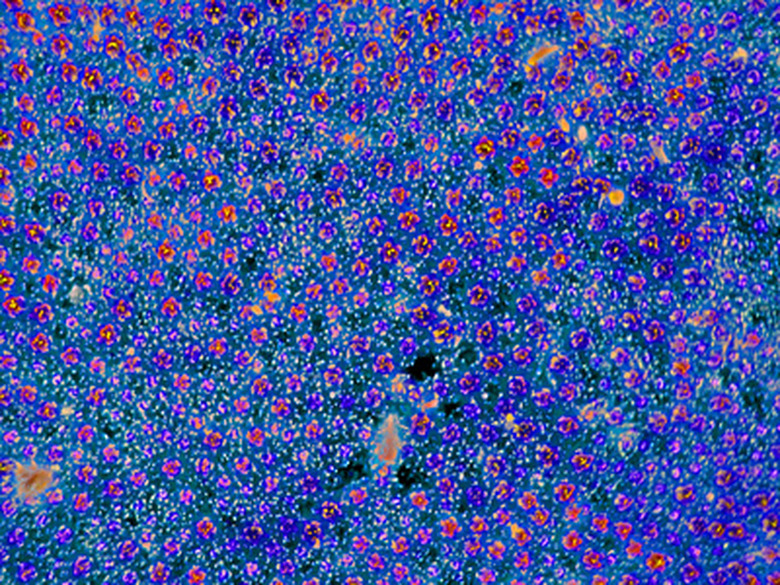The Structure That Surrounds The Cytoplasm In A Bacterial Cell
The cells of all organisms contain a membrane that helps to protect the cell and manage the movement of materials in and out of the cell. Some cells, including bacteria, also have a cell wall.
In bacteria, the cytoplasmic membrane surrounds the cytoplasm and is located inside the bacterial cell wall. The cytoplasmic membrane is also known as the _plasma membrane or simply the cell membrane_.
TL;DR (Too Long; Didn't Read)
The cytoplasmic membrane surrounds the cytoplasm in a bacterial cell. It is also known as the plasma membrane and the cell membrane.
Anatomy of a Bacterial Cell
Anatomy of a Bacterial Cell
Bacteria itself is an entire domain of organisms. All organisms within the Bacteria domain are known as **prokaryotes.**
The cells have the shape of rods, spirals or spheres (cocci) and are often classified according to their shape. These single-celled organisms have a simpler design and fewer types of organelles than eukaryotic cells. Despite their simplicity, they have flourished for more than three billion years.
Bacterial cells contain organelles similar to some of those found in plant and animal cells, such as ribosomes and the nucleoid. The nucleoid is the site where DNA is located, much like the nucleus in eukaryotes. However, bacterial organelles, including the nucleoid region, are not enclosed in membranes.
The organelles reside within the gel-like **cytoplasm** that makes up most of the volume of the cell. The cytoplasm and its contents are contained within a cell membrane, or cytoplasmic membrane.
A rigid cell wall located exterior to the cytoplasmic membrane protects the bacterial cell. Because eukaryotic cells lack a cell wall, the eukaryotic cell membrane serves as the main barrier between the interior of the cell and the outside environment.
Plasma Membrane Structure and Permeability
Plasma Membrane
Structure and Permeability
The cytoplasmic membrane is composed of proteins and **phospholipids**, which are made of phosphate and fatty acids. The phosphate end of the membrane's molecules is polar, or water-soluble, and the lipid end of the molecule is non-polar, or fat soluble. The polar ends point outward toward the cell wall and the cytoplasm while the non-polar ends point inward to the center of the membrane.
The membrane's structure allows it to control the passage of molecules in and out of the cell through selective permeability. Water, water-soluble molecules and gases such as oxygen, nitrogen and carbon dioxide can move passively through pores in the membrane via osmosis. Fat-soluble molecules and other large molecules require energy to actively pass through the membrane.
Cytoplasmic Membrane Functions
Cytoplasmic Membrane Functions
The passive diffusion and active transport of molecules across the cytoplasmic membrane allow bacterial cells to take in water, gases and nutrients they need to survive. Passive diffusion only allows molecules to move from an area of higher concentration to an area of lower concentration. **Active transport** carries molecules against the concentration gradient and enables bacterial cells to compete with other cells for resources in their environment.
In addition to moving molecules into the cell, the cytoplasmic membrane also provides a means for the removal of waste materials, which are transported out of the cell.
Other key cellular functions that take place in the cytoplasmic membrane include:
- Aerobic or anaerobic cellular respiration, depending on the cell's metabolism
- Photosynthesis in autotrophic bacteria
- Anchors for flagella, which are external structures in some bacteria
that allow the cells to move toward food and away from predators or toxins
Cite This Article
MLA
Mentzer, A.P.. "The Structure That Surrounds The Cytoplasm In A Bacterial Cell" sciencing.com, https://www.sciencing.com/structure-surrounds-cytoplasm-bacterial-cell-7264334/. 29 April 2019.
APA
Mentzer, A.P.. (2019, April 29). The Structure That Surrounds The Cytoplasm In A Bacterial Cell. sciencing.com. Retrieved from https://www.sciencing.com/structure-surrounds-cytoplasm-bacterial-cell-7264334/
Chicago
Mentzer, A.P.. The Structure That Surrounds The Cytoplasm In A Bacterial Cell last modified March 24, 2022. https://www.sciencing.com/structure-surrounds-cytoplasm-bacterial-cell-7264334/
